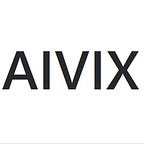Week 49-2018: Armageddon Volatility Chart and Veil Integration
AIVIX explodes as crypto winter keeps manifesting and our plans to integrate Veil
It’s the end of the world as we know it
We start this week again by having a look at a 7-day chart of our indexes.
Volatility went up by a lot this week as crypto exchange rates go further down the drain. The historic volatility based on the last 30 days is even higher. The AIVIX-ETH is leading the way by relatively growing by a higher factor than the AIViX-BTC, which seems to be more stable. There is a glimpse of light in the last couple of hours with prices recovering and volatility at least plateauing.
When looking into the actual markets on Augur the reaction to these exchange rates are not very high, due to low liquidity, volume and not a lot of markets that let traders bet on different situations, for example in the current bearish market.
The issue of low liquidity and volume, as well as availability of structured markets, nicely leads to the next chapter of our attempts to integrate the derivative trading platform Veil.
Integrating with Veil
What is Veil?
Veil is building a derivatives trading platform based on the Augur protocol, which is currently is in alpha test on the kovan ethereum test network. Currently there are markets for price of BTC, ETH Gas, ZRX and REP.
Their structured way of setting up regular markets for specific time frames could be a great foundation to derive interesting data and KPIs from. Currently on Augur most derivative markets are set up relatively random and are not structured with daily or weekly markets as in traditional stock or future options.
Also they are building a very nice beginner and mobile friendly UI, which could solve the problem of adoption, that the core Augur product currently has. Given a good interface to access the markets there will be an incentive for providing liquidity and creating marketing efforts to pull people in and thus create more volume, which would also lead to a more valid basis to create interesting analysis for us.
Fortunately Veil released a open source client library to connect to their data this week.
We already started playing around with it and set up a “under construction” version of AugurInsider with the Veil test net markets integrated under kovan.augurinsider.com
It is not really functional yet, but we will develop this somewhat in public, so feel free to check in from time to time!
Processing scalar markets
An interesting challenge in integrating Veil markets is how to process “scalar” markets.
The “yes/no” markets currently popular on Augur for derivatives like “Will price of X be above Y on date Z” are relatively straight forward to translate into traditional options, as they are basically binary options, that offer a fixed payout when a certain event occurs.
Scalar markets provide shares that have a maximum value when the underlying reaches a certain value X and beyond and a value of 0 when the underlying has a value of Y or below. In between the value of the share is linearly scaled between X and Y.
Basically the payout structure seems to be very similar to vertical option spreads. More specifically a “Bull spread” when going long and a “Bear spread” when going short. (See the chart above)
A vertical option spread is a combination of two option positions. One long and one short, where the long position caps the theoretically unlimited downside of the short position.
Maybe mapping scalar markets to option spreads will be a good way to analyze them with traditional option KPIs. We will explore this further in the next months.
About us
AugurInsider is building the authority for KPIs about derivative markets on the decentralized market protocol Augur that lives inside the Ethereum blockchain.
